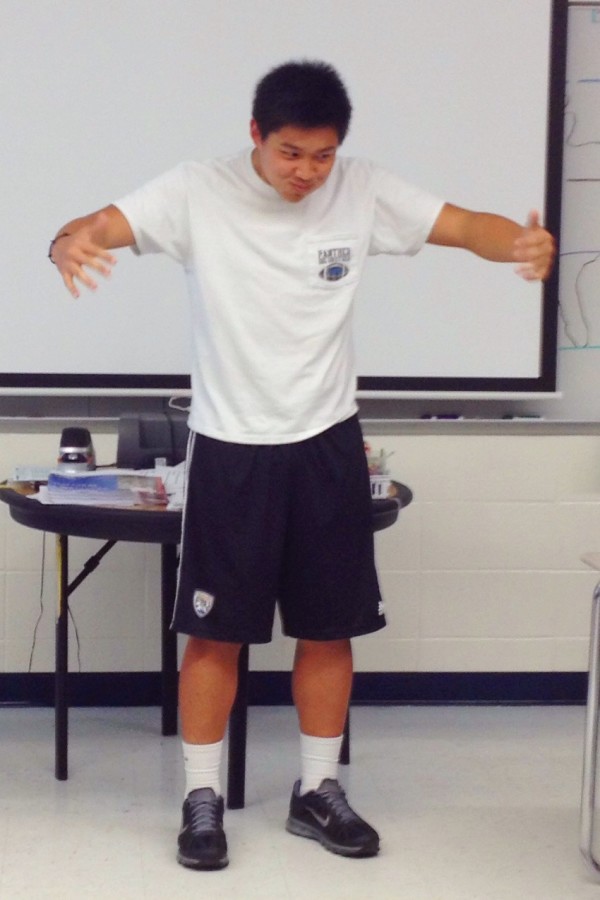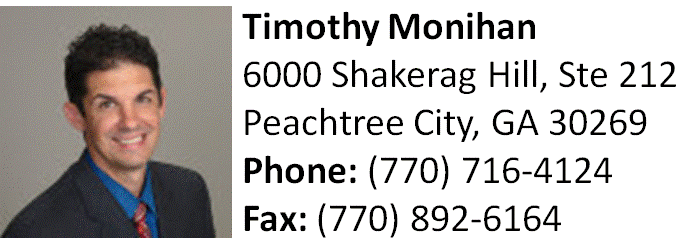Students thrive in first-year American Sign Language class
Junior Sung Kim signs a poem in the American Sign Language course.
May 26, 2015
If you looking for an elective or foreign language that is both fun and life-changing, look no further. American Sign Language, taught by Julie Karneboge, provides a nurturing environment where students learn sign language.
“We have a lot of fun in this class,” Karneboge said. “The students are hardworking and show great interest in what they are learning.”
The Georgia Board of Education approved American Sign Language as a Foreign Language credit. “Students who are looking for a Foreign language should consider American Sign Language,” Karneboge said. “Students who are visual learners excel in this class due to the constant signing.”
Students come in with differing levels of experience in sign language. For some, this is their first time learning sign language. Others have been signing their whole lives because of a hearing impairment. Junior David Martin loves what this class has to offer. “I like the different games and projects we do in here,” Martin said.
Students not only learn the language, but they learn the culture of sign language as well. “Being deaf is a whole world in itself,” Karneboge said. “Every language has a culture behind it. This applies to sign language as well.”
This class also explores the different variations of sign language. “In different parts of the world, there are different forms of sign language similar to other foreign languages like Spanish,” Karneboge said.
Karneboge constantly comes up with a variety of ways to teach her students the material. “We watch documentaries about families who learn their child is deaf and how they deal with that as well as play games where students must sign vocabulary words to each other with no talking,” Karneboge said. “Sometimes we do worksheets, but we mainly try to interact with one another.”
For their end-of-the-year projects, students signed a song or poem in front of the whole class. Presentations varied from Dr. Seuss’ “One fish, Two fish” to original poems written by some of the students. “Students were allowed to sign songs, poems, or classic children’s tales,” Karneboge said. “I was very impressed with their growth over the year and their creativity in this project.”
After the projects, two former Panthers came to speak to the students to share their experiences as deaf students. Maggie Apple spoke to the students about what it was like being one of few deaf students in her class at Starr’s Mill and how she persevered through it with the help of her interpreters and fellow deaf students.
Samantha Muniz, a teacher at Georgia School for the Deaf, spoke to the students about being a deaf student in college. “When I went to Georgia College and State, I struggled in lectures because there was a lack of interpreters who could remain with me in the classes,” Muniz said. “However, I adjusted how I interpreted the material in the class to make it easier for me to understand. When I transferred to Valdosta State, my whole outlook changed because that school had many interpreters who helped me get through classes.”
Muniz said she enjoys teaching young deaf students. “I always had a passion for helping younger kids, and when I got a teaching position at Georgia School for the Deaf, I was thrilled,” Muniz said. “I love getting to see the students every day and to help them grow in their education through signing.”
Many students have also changed their career paths to follow their passion for sign language. “Four students after taking this class have decided to become a teacher to deaf students or an interpreter,” Karneboge said.
Junior Zoe Martin is one of these students who wants to pursue a career helping hearing-impaired children. “I want to take what I learned in this class and use it in the future to help students who are deaf in whatever environment,” Martin said.
American Sign Language impacts the lives of students both in and out of the classroom. Junior Kayla Trickey applies her knowledge of sign language daily. “I have a lot of friends who are hearing impaired,” Trickey said. “Sometimes, instead of talking, we will sign to each other. It makes communication a lot easier for them when we sign rather than talk.”
The class not only exposes students to sign language, but it expands their thinking about possible career paths they may wish to follow in the future.
“Even though this class is certainly not easy, the students have done a wonderful job grasping the material,” Karneboge said.





